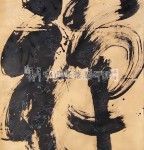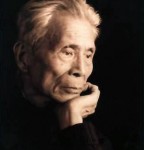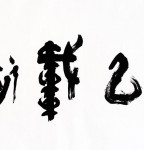Laozi is the name of a legendary Daoist philosopher, the alternate title of the early Chinese text better known in the West as the Daodejing, and the moniker of a deity in the pantheon of organized “religious Daoism” that arose during the later Han dynasty (25-220 CE). Laozi is the pinyin Romanization for the Chinese characters which mean “Old Master.” Laozi is also known as Lao Tan (“Old Tan”) in early Chinese sources (see Romanization systems for Chinese terms).
The Zhuangzi is the first text to use Laozi as a personal name and to identify Laozi and Lao Tan. The earliest materials associated with Laozi are in the Zhuangzi’s Inner Chapters. The Outer Chapters of that work have ten logia in which Laozi is the main figure, four of which contain direct attacks on the Confucian virtues of ren, yi, and li that are reminiscent of passages from the Daodejing and probably date from the period in which that collection was reaching some near final form. The earliest ascription of authorship of the Daodejing to Laozi is in Han Feizi and the Huainanzi, but several themes from the Laozi logia of the Zhuangzi are traceable into the Daodejing and on at least two occasions in that text Laozi counsels following dao (the Way) to possess de (virtue). Laozi became a principal figure in institutionalized religious forms of Daoism. He was often associated with many transformations and incarnations of the dao itself.
| < Prev | Next > |
|---|
- 2011-05-04 - Wang Xizhi, The Sage of Chinese Calligraphy
- 2011-04-23 - Ouyang Xun, one of the Four Great Calligraphers of Early Tang Dynasty
- 2011-04-07 - Chu Suiliang 褚遂良, one of the Four Great Calligraphers of Early Tang Dynasty
- 2011-01-07 - 文徵明行书《明妃曲》
- 2010-12-20 - Philosophy About Chinese Calligraphy
- 2010-08-08 - The Dragon's Embrace - China's Soft Power Is a Threat to the West
- 2010-06-04 - Aesthetics & Philosophy About Chinese Calligraphy
- 2010-04-19 - The Core of Chinese Culture
- 2010-03-12 - Bringing it All Back Home: Chu Teh-Chun at NAMOC












